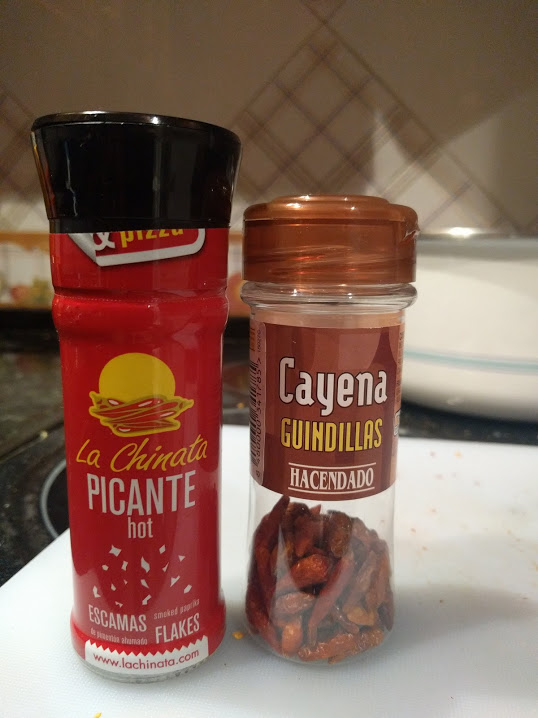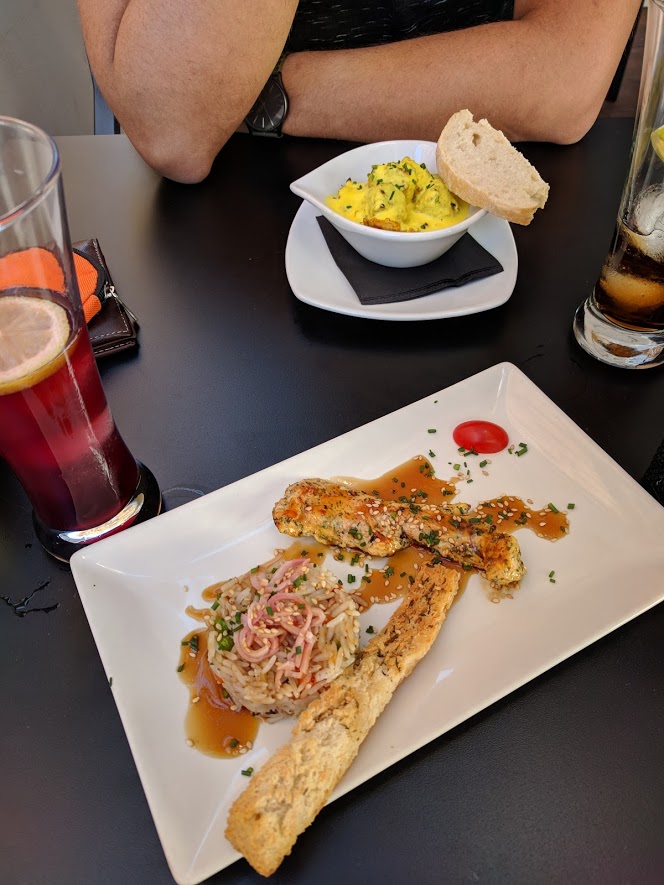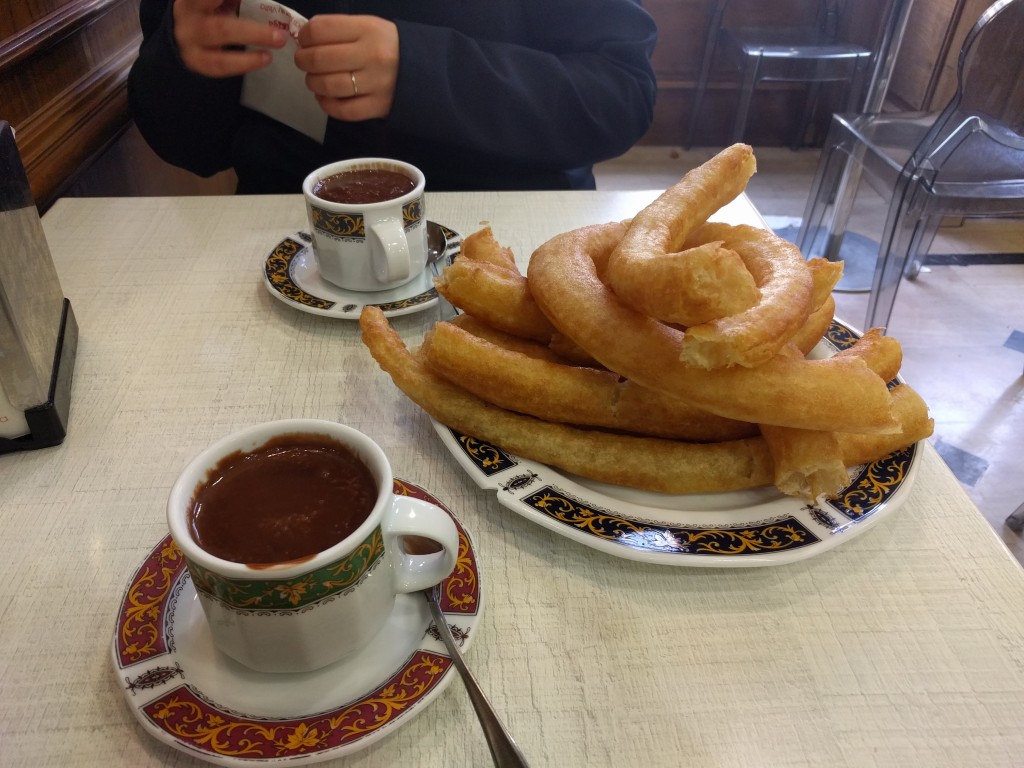There are very few constants in Spanish culture or laws. What means one thing today means something tomorrow. What works in one region might not work in another. So I think it goes without saying that the cuisine has no constants either. There is no one food that represents the entirety of Spain. Tortilla and paella maybe. But Paella and tortilla in Galicia are different than in Andalucia. We’re going to try to talk about food and eating but realize we’re only talking about our region.
We’ve tried to make this clear but in case people are still confused: even though you are hearing Spanish, dying of heat stroke, and gazing upon an beautiful desert hell-scape, you are not in Mexico. The Spanish took gold and silver (and corn) from Mexico, they left the chili peppers behind. The food got a bit mixed up for both cultures but they’re really not at all similar. For instance most of the Spaniards we have met hate spicy foods. HATE them. If something has the option to be spicy they vehemently say no (5 or 6 times. “Picante?” “Oh no, no, no, no, no, no.”)

So what is Spanish food? I’ve never seen a “Spanish” restaurant in America. I’ve seen tapas bars, but tapas can be just about anything (more on this later). What do they eat here? We’ve shown you tortilla and a meat stew, but those were just scratching the surface.
So, what are Tapas exactly?
Tapas were originally an advertisement for a larger plate. When you sit down at a restaurant, the waiter takes your drink order, and then brings you a tapa. If you like it, you stay and order more food. If you don’t like it, you mosey on to the next restaurant (after paying). There is no rhyme or reason to it, different tables will get different plates, sometimes your second tapa will be different than your first, sometimes it remains the same. Sometimes you even get to choose which tapa you want from a list.

It’s still an advertisement of their food quality but it’s also a perk. Every restaurant is doing it, you can’t be the one restaurant that doesn’t. Also it’s worth noting that not every restaurant does it for free. But in our region they do so we’re spoiled.
You can order tapas individually from the menu. They are usually nicer than the free tapas that come with drinks.

A tapa can be anything. Here is a short list of tapas we have had (all were free with drinks)
- Potato Chips with Jamon (cured ham)
- Olives, both from the can, or “fresh”
- Meatballs in a sauce
- Some curry chicken
- Teriyaki chicken (Both of these were at an international fusion restaurant)
- Patatas bravas “Brave Potatoes” (fried potatoes in a “spicy” tomato sauce)
- Ensalada Rusa “Russian Salad” (This is like if potato salad and tuna salad had a baby, and then you threw in some canned veggies and olives, also it probably is not from Russia)
- An empanada (turnover) filled with blood sausage and apples.
- Various cheeses
If you want more than a small tapa, you can order a “racion”. This is a larger portion of a tapa. Raciones are for sharing, and it would be silly to order one for yourself.
If you want an actual meal, you can order “platos”or if it’s lunch the “menú del día” (menu of the day). The menu del dia is our favorite. You get to choose your starter, your main, and if you want dessert or coffee at the end. It usually comes with a drink, and the most expensive we’ve ever seen was 11.00 euros at a very fancy restaurant.

Meals!
Mealtimes in Spain are super strange, and if you remember the words “desayuno” (breakfast), “almuerzo” (lunch), and “cena” (dinner), well… be ready to be disappointed. Those words are basically meaningless in Spain.
Desayuno is first, so it’s partly accurate, and it is usually just tostada (toasted bread with oil and grated tomato), with juice. Other popular options include churros with hot chocolate (no sugar or cinnamon) or croissants. A tostada costs 1.25 or so at a restaurant. There are usually deals that include a bit of cured meat and a juice or a coffee for about 3 euros. One more thing to keep in mind, nothing will be open before 7:00. So, no quick coffee or muffin on your way to work.

Almuerzo is next, but wait, it’s only 10:30-11:00! That’s right, it’s more of a second breakfast, not a proper lunch. Almuerzo can be a small sandwich, more tostada, muffins etc, usually served with coffee. The best thing I’ve had at this time was, for lack of a better name, a pork chop sandwich. The bread was crusty like a baguette, and the pork was thin and tender enough to chomp through. Also they had spread some lard around the inside of the sandwich, and it was delicious. (Kaeti says it was just bland and terrible).

Next is La Comida, the meal. This is between 2:00 and 3:00. This is the largest and most complicated meal. It marks the beginning of siesta, and can be anything so long as it’s large. This is when you are allowed to order the menu del dia. When we first got here, we wanted lunch at 1:00ish, but the cooks don’t even come in that early.

La merienda is next, I guess. Kaeti and I do not typically partake in this since around the end of siesta. It’s more like a coffee and pastry time, a light snack to wake you up after siesta. If lunch was your biggest meal then this is your lunch dessert.

Finally people start eating tapas (or raciones if with friends) at 9:00, and continue to do this until 11:00, which is when “la cena” occurs. It isn’t dinner the way you are thinking, rather a bedtime snack.
Basically, snack, snack, meal, snack, large snack, then another snack.
Sounds fun, but it makes being a tourist here a living hell. If you want to start your day with a large breakfast to get plenty of energy for all the exploring you’ll be doing, tough luck. Tourist areas will have restaurants open at earlier times, but you can be sure you’ll pay the tourist price. Then, after a small breakfast and tons of walking, shopping and museum-ing, you want a hearty lunch. If you are hungry before 2:00, again, tough luck. Kaeti and I have gotten supper hangry (hungry angry) looking for lunch. In desperate situations, we’ll eat at Burger King. Sure, we could hit up a restaurant that keeps itself open for the tourists, but again…tourist prices. And don’t even get me started on dinner. There is nothing worse than walking around, starving, at 8:00 looking for anything open. The restaurant says it’s open but it’s locked or the chef hasn’t even arrived yet.
Here is my advice to people who want to visit Spain, but are worried about the eating times.
Option one, be a tourist. Eat at the tourist joints. The food is probably good, the menu and waiters will be multi-lingual, and you can try most “Spanish” foods. But you’re going to pay the price. Literally.
Option two, adapt. This can be tough if you are only coming for a week or so. Kaeti and I have managed mostly do this (I say mostly because, while I type this, it is 9:50 pm and I have yet to eat dinner, but Kaeti and I did have a large brunch). But it took us months to go from typical American dinner time of 6:30ish to 8ish. That’s two whole hours.
Option three, stay in an apartment. For some reason, apartments are usually cheaper to stay in than hotels. Staying in an apartment has its own challenges (Does the owner speak English (almost never)? Is it hard to find (almost always)? Can you live without a 24hr reception desk? But you will have your own kitchen so you can eat when you want. Also, apartments are better to retreat into when it’s siesta, and nothing is open anymore. You will also get the fun opportunity to shop at a Spanish grocery store. Just make sure there is a grocery store within walking distance before you book.

Leave a comment